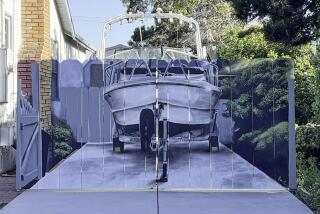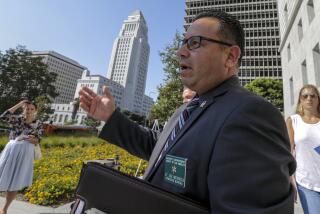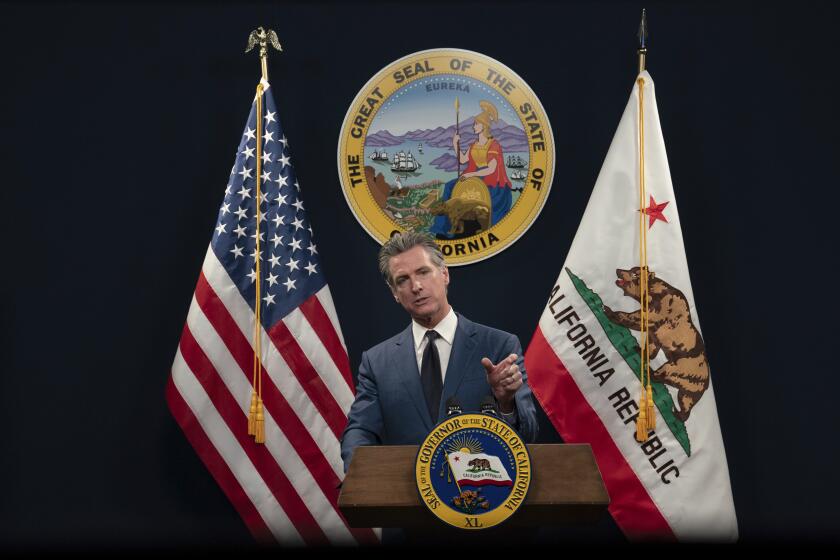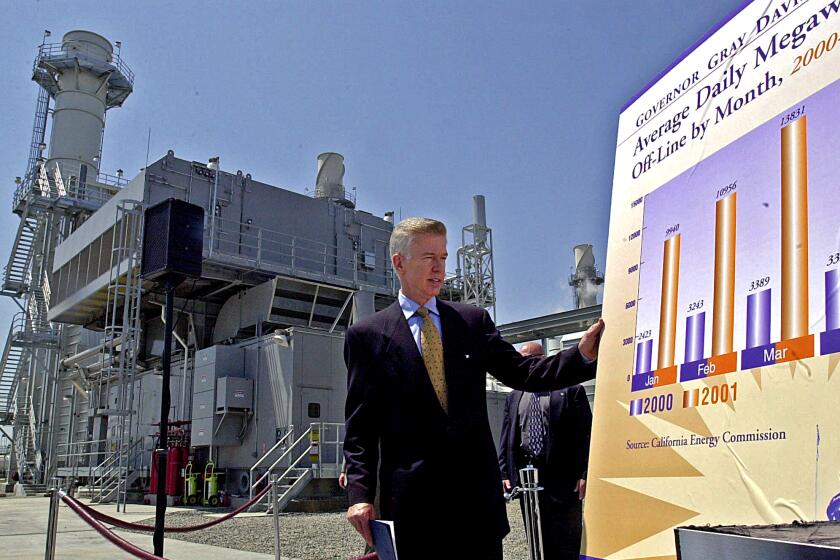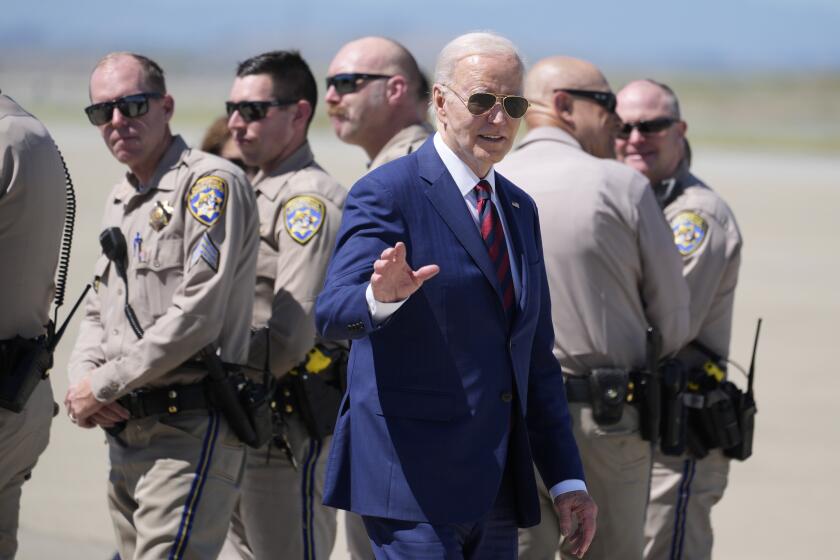Gas Tax Increase Needed to Keep California Moving : Transportation: Congestion has hit ‘critical mass.’ A few cents a gallon extra--with it all going to ease the crunch--could put us on the road to recovery.
Earlier this month, growth figures were released for California. It shouldn’t surprise anyone that we’re growing at the fastest rate since the explosive immigration of defense workers during World War II. More than 29 million people now make their homes here, an increase of 740,000 residents last year alone. Most of those folks made their homes in Southern California.
And, unless the climate changes, the economy falters or the sunny Rose Bowl game ceases to be broadcast to the snowy northeastern United States each New Year’s Day, the Golden State will continue to grow.
The stresses and strains of growth are most acute on our infrastructure--the sewers, the water systems, the freeways and roadways that provide our basic public services. In fact, we’ve reached the “critical mass” on our transportation system. It’s on the freeway at rush hour that the results of growth are obvious.
There are really only two options: ignore it or come to grips with it. Gov. George Deukmejian, Assemblymen Richard Katz and Bill Baker and state Sen. Quentin Kopp have chosen the tougher course, using creativity and common sense to fashion a “blueprint” for transportation.
Traditionally, the truest of “user fees,” the gas tax, has been used to pay for our highways, buses and commuter rail systems. In fact, gas taxes are protected by the state Constitution and can be used only for transportation.
California’s roads have fallen far behind the growth curve, with a fuel tax rate that ranks 46th among all states and per capita spending on transportation that comes in dead last. The effects of inflation and increasing automobile fuel efficiency have combined to destroy the purchasing power of existing fuel taxes.
Put simply, we’re spending the same amount of money on transportation today that we did 10 years and 6 million people ago.
The doom-and-gloom stories are already appearing in newspapers from Eureka to San Diego. This year, for the first time in history, the need for maintenance and safety programs for our highways will exceed the total amount collected at the gas pump. There won’t be any money for highway construction!
In Orange County, it’s the widening of the Santa Ana Freeway and the rebuilding of the 5/55 interchange that will fall victim to the funding shortfall.
The crisis prompted Deukmejian, California’s foremost anti-tax fighter, and the state Legislature to forge an agreement known as the Traffic Congestion Relief and Spending Limit Act of 1990, which will be on the June ballot. If approved, $18.5 billion in specific highway, rail and transit projects would be built over the next decade.
Orange County would receive $1 billion in new state funding, including enough to bring another $2 billion in new federal matching funds to local freeways. Specifically:
* The county and cities would receive a total of $21 million a year to fill potholes and repair streets.
* $199.4 million would be spent on existing freeways, including $139 million to widen the Santa Ana Freeway and rebuild the 5/55 interchange, and $12 million for new sound walls.
* $300 million would be used to match up to $2 billion in federal funds for highways and transit systems.
* $195 million for commuter rail service between Riverside and Orange counties and to improve Amtrak service between Orange, San Diego and Los Angeles counties.
* $65 million for computerized traffic signal systems and other low-cost, high-benefit traffic systems management projects.
* And for the first time in history, up to $7 million will be available for urban reforestation along our streets and highways.
But will the new dollars make a difference? Will traffic be reduced? Or will the funds simply fuel the bureaucracy and disappear in an endless “chase” after spiraling growth and suburban sprawl? The answer to the last question is an unequivocal no.
The transportation plan requires the county and the cities to develop a countywide Congestion Management Program that, for the first time in history, requires local elected officials to balance the impacts of new development or face losing transportation funding.
In short, the impacts of new development on traffic must be studied to forewarn of problems before development occurs and then the problems identified must be mitigated before the development occurs.
Performance standards also must be developed for public transit that require on-time, coordinated service throughout the county.
And the highest priority for all new transportation funding in the county must be for traffic reduction and clean-air protection.
For the first time, the commuter who is paying the tab will be certain the new dollars will be spent to reduce traffic.
More to Read
Start your day right
Sign up for Essential California for news, features and recommendations from the L.A. Times and beyond in your inbox six days a week.
You may occasionally receive promotional content from the Los Angeles Times.
